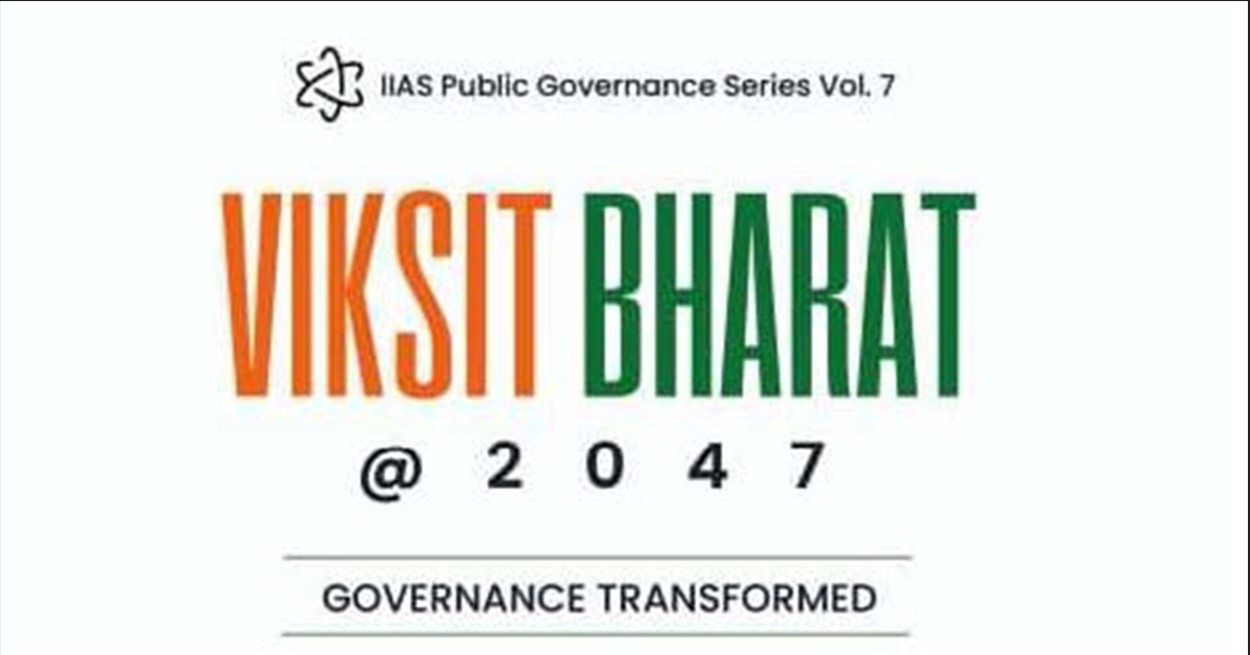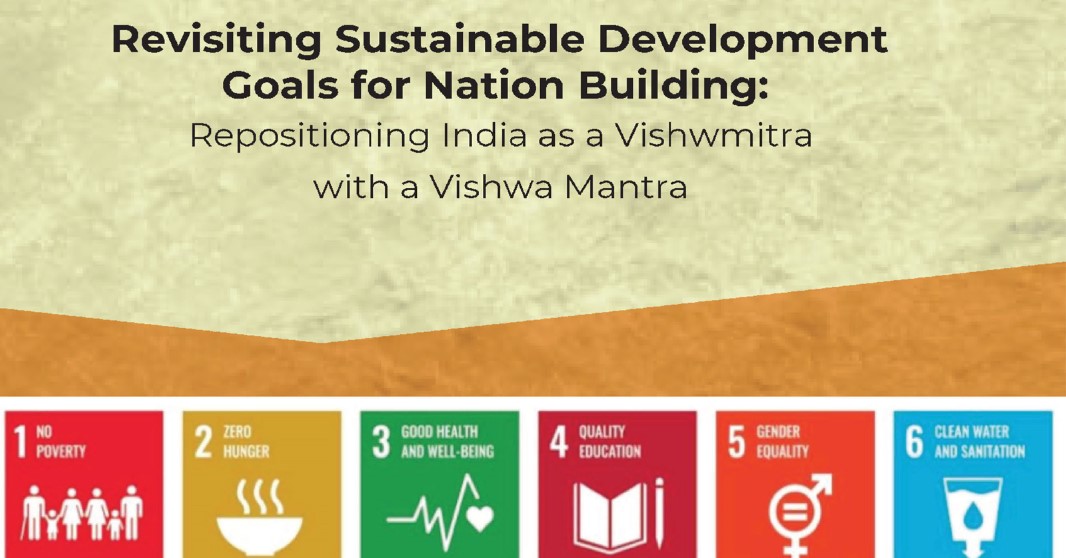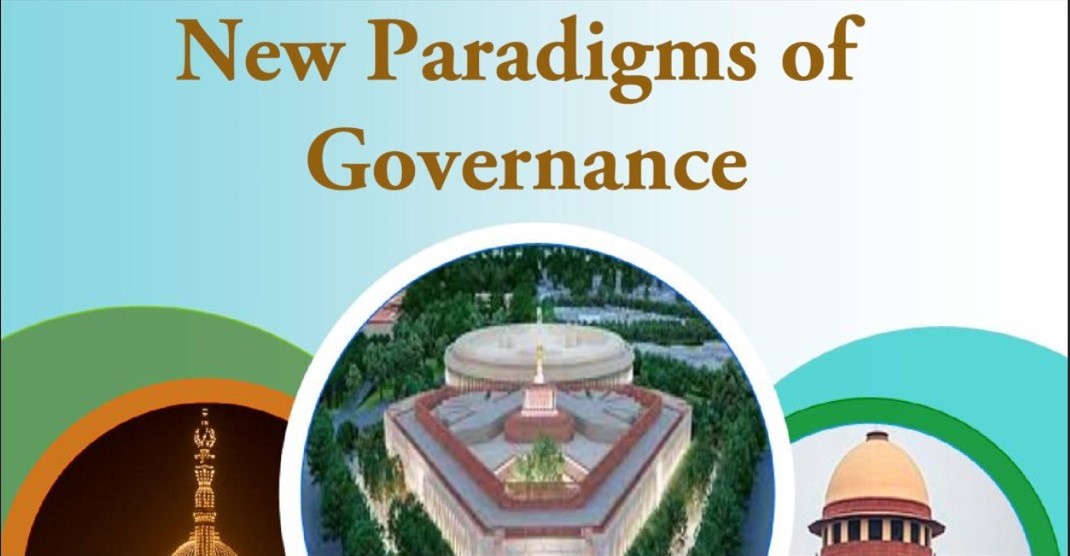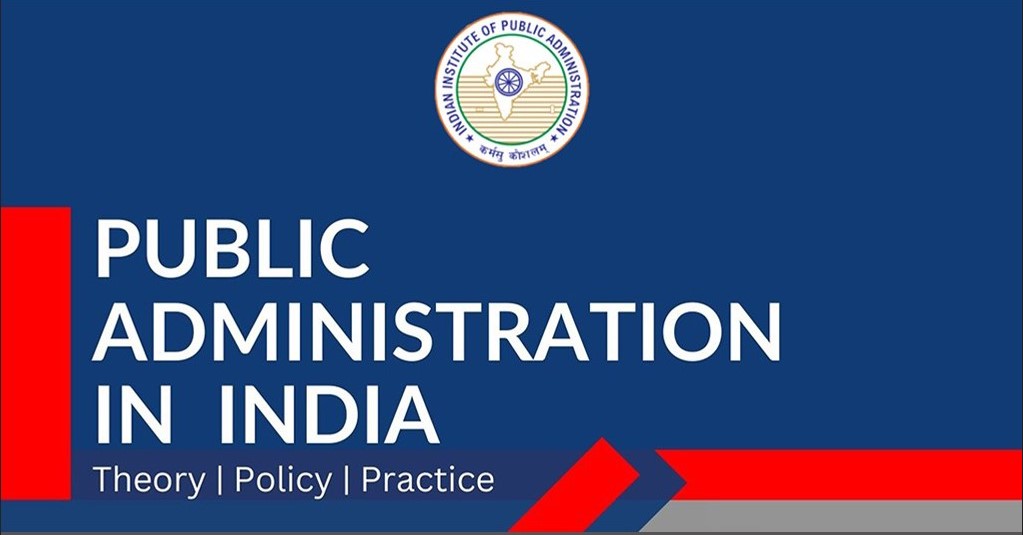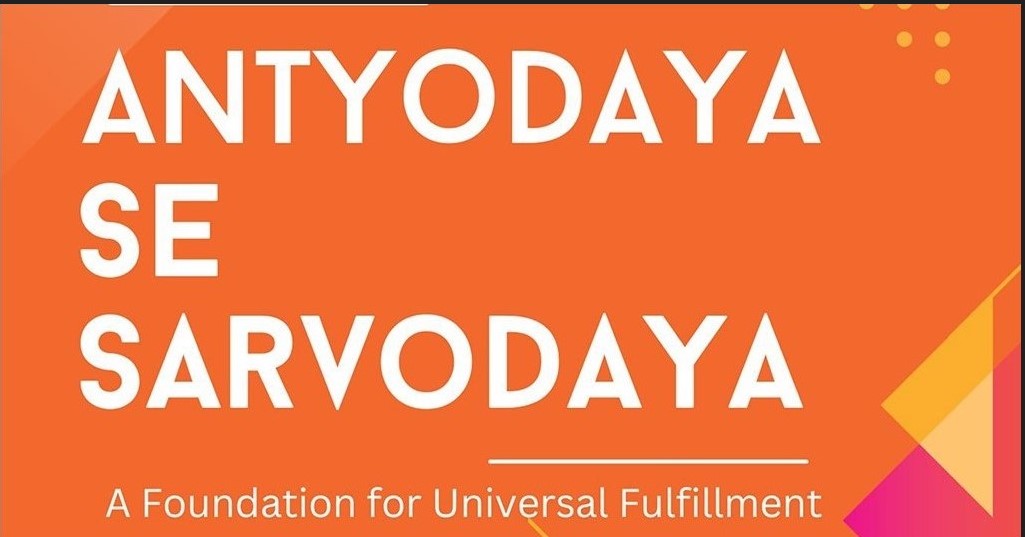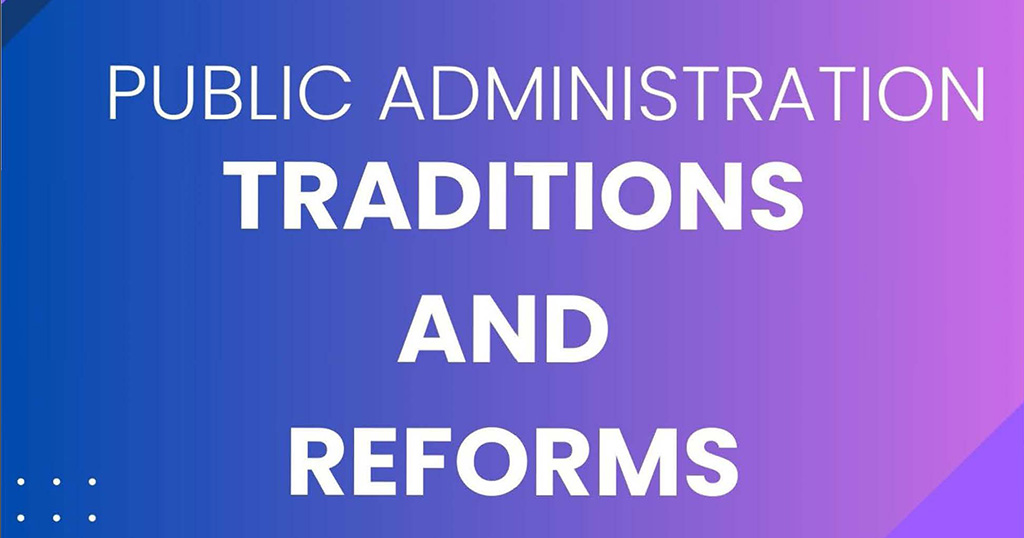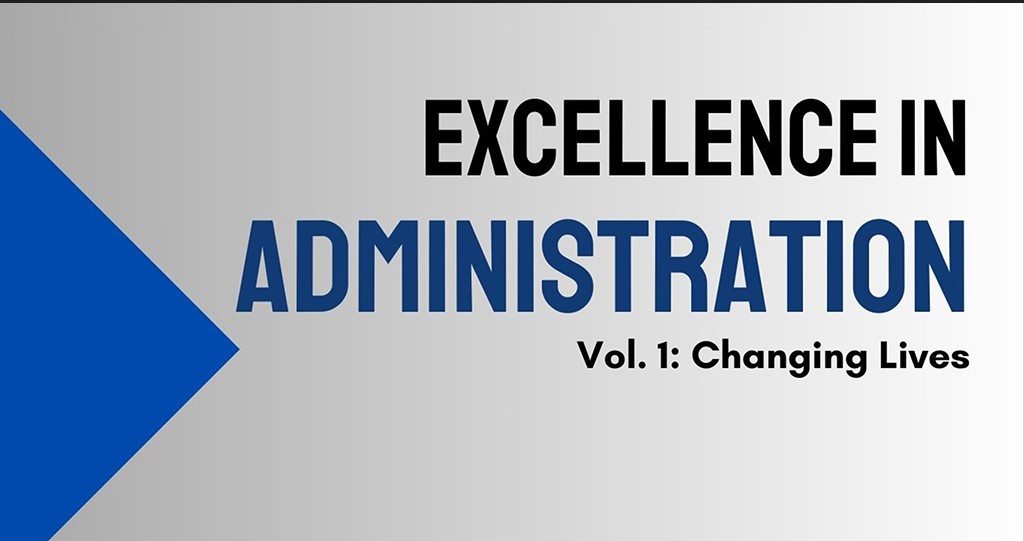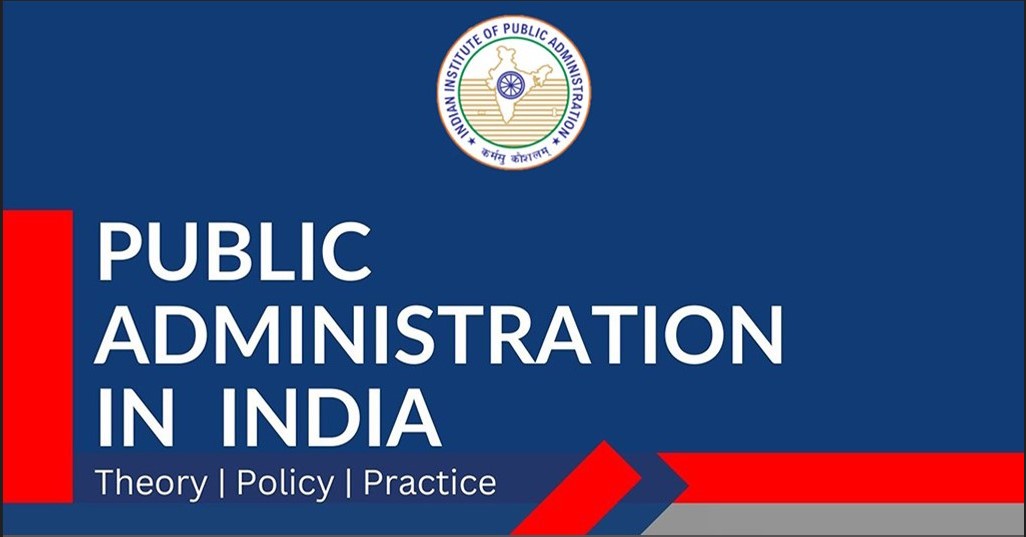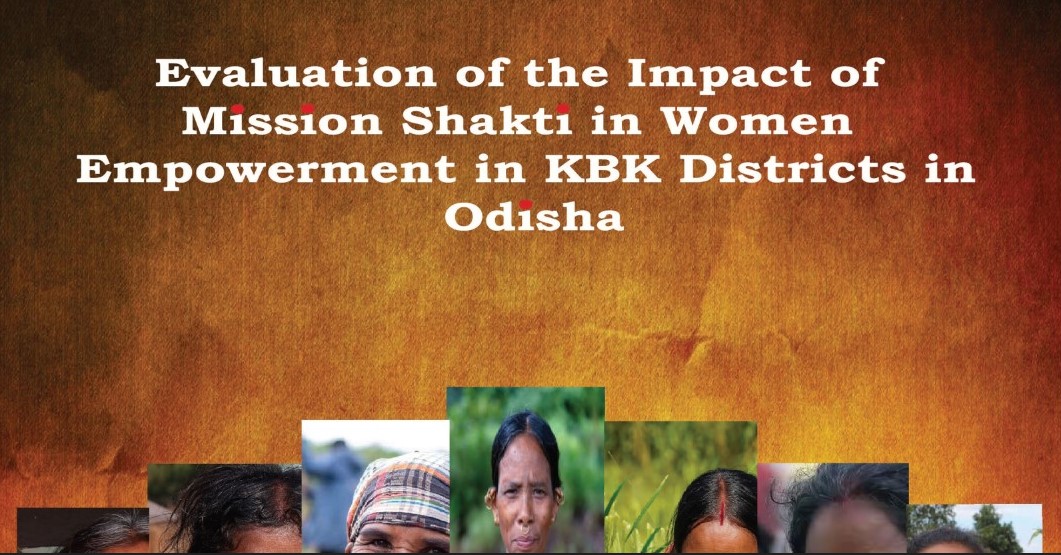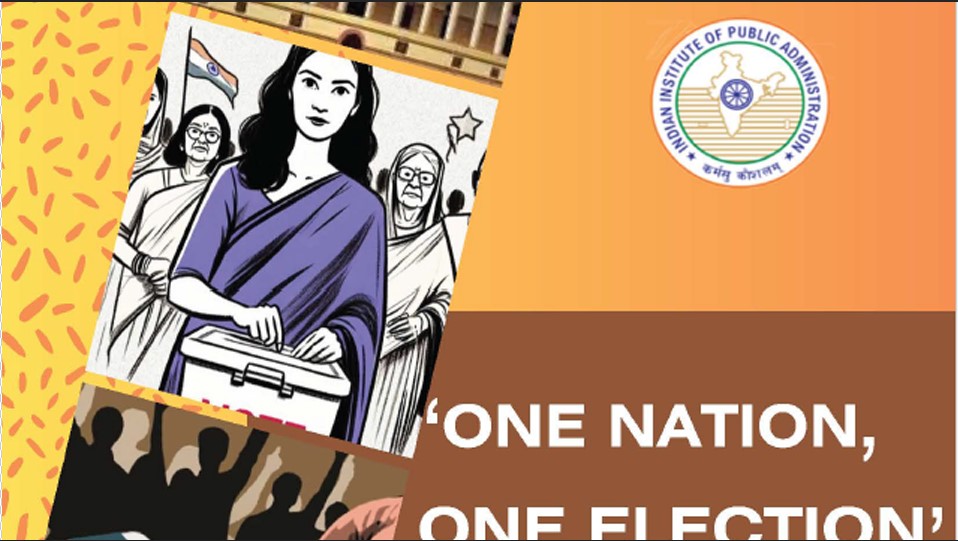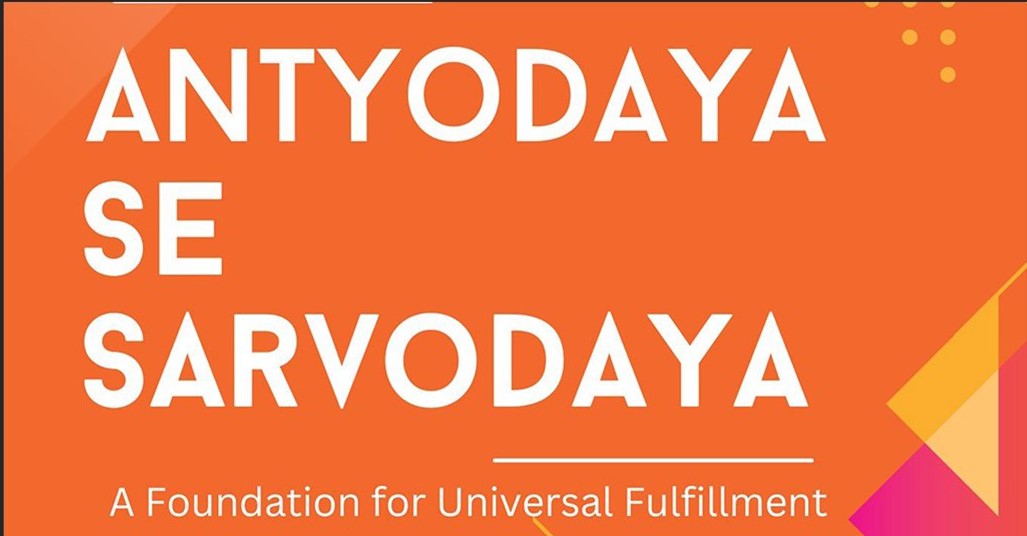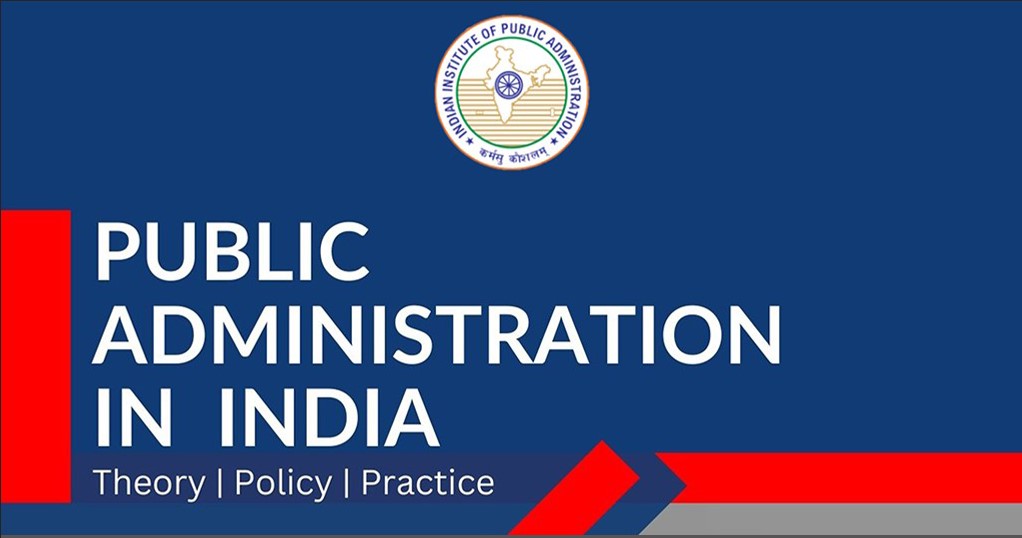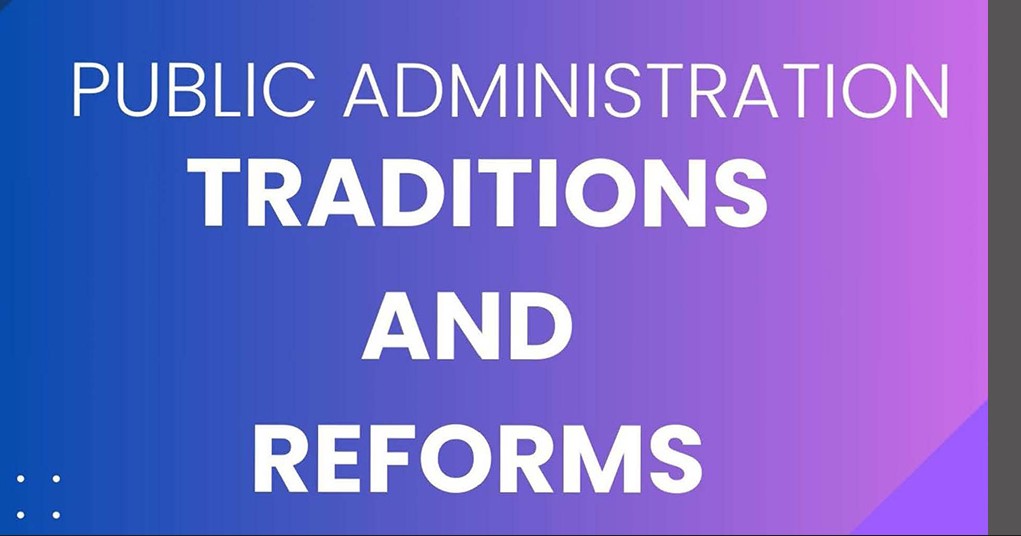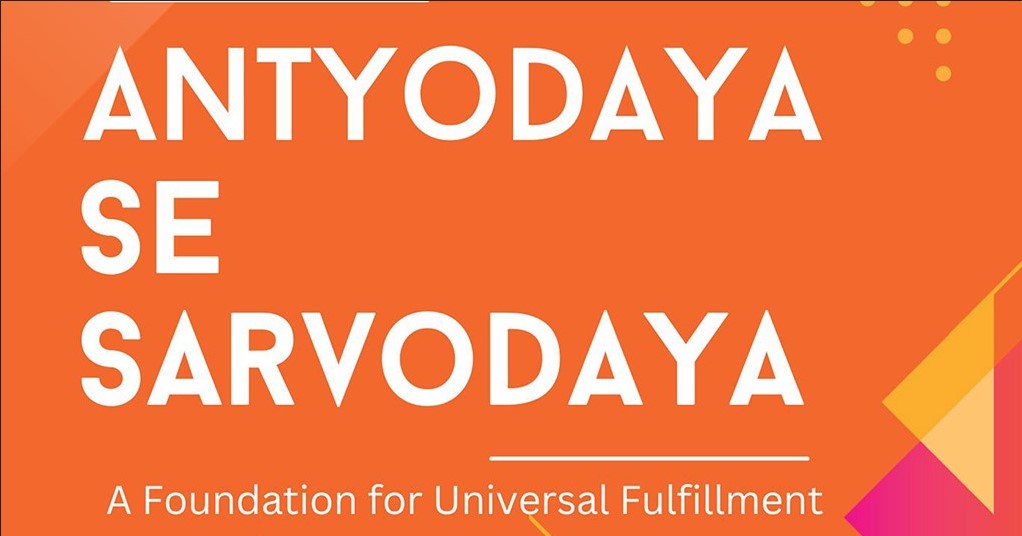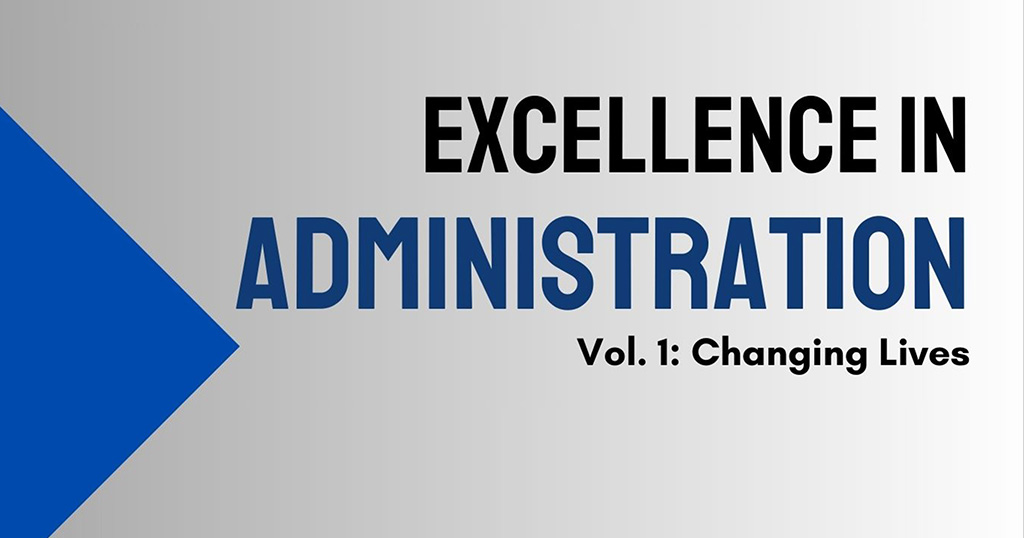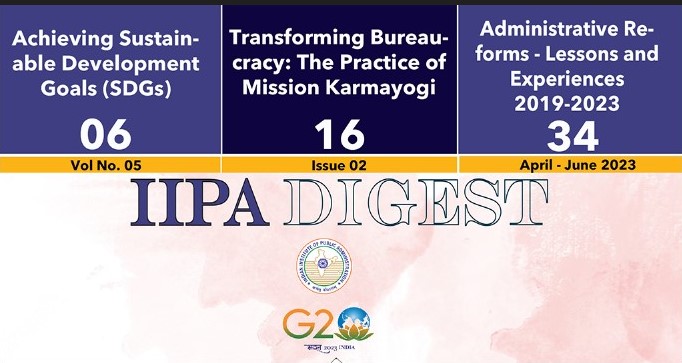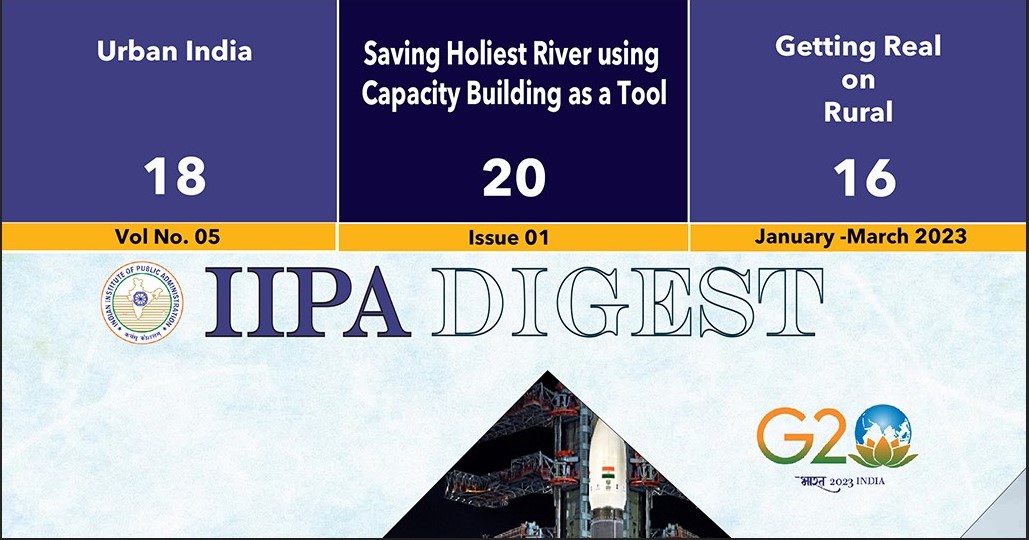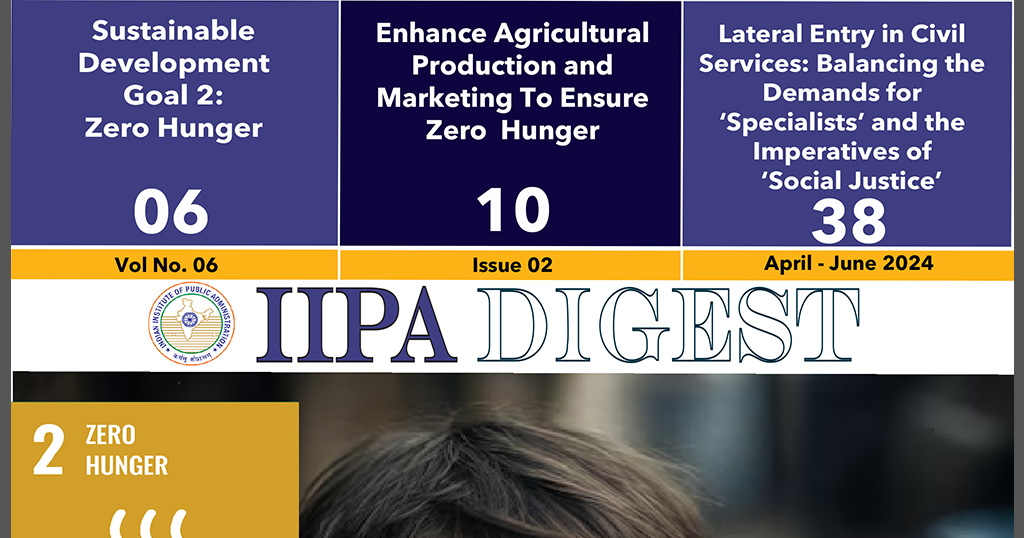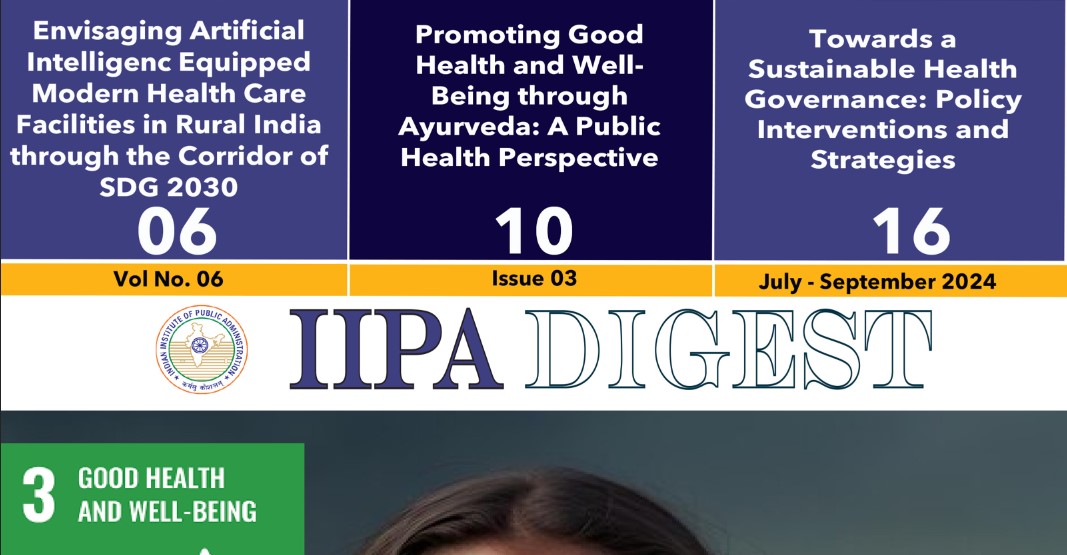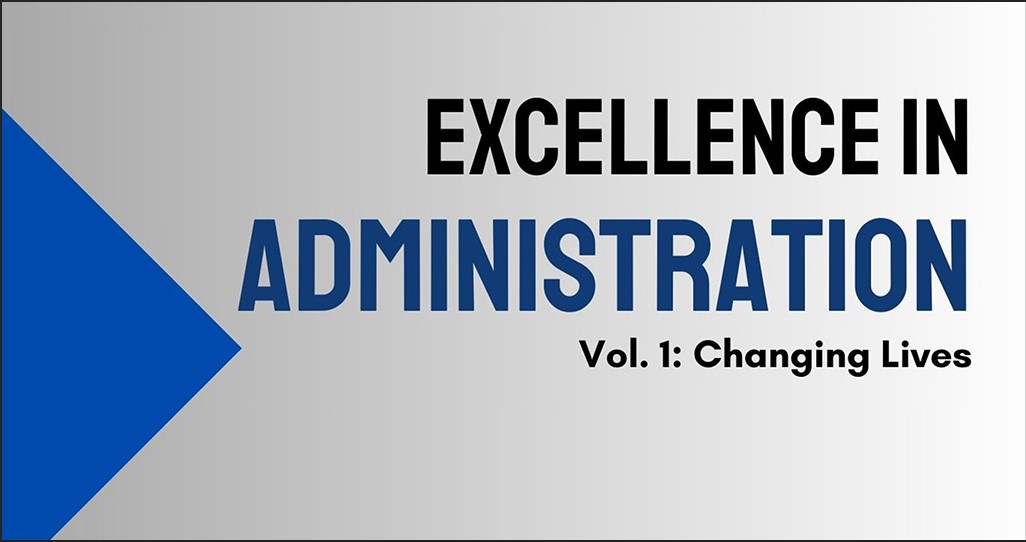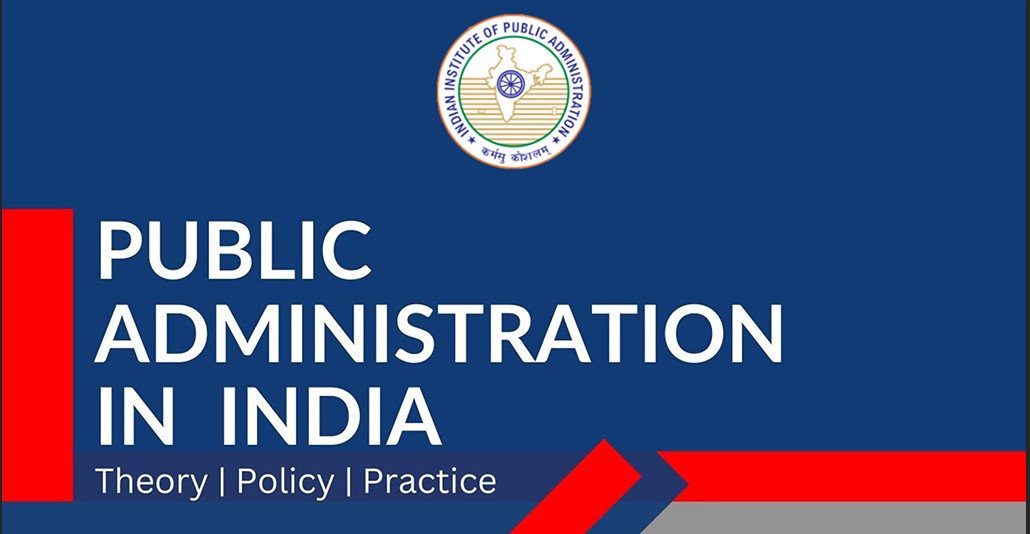State Government and Administration in India: Theory, Policy, and Practice
17. Introduction
India's governance framework is fundamentally federal, characterized by a division of powers between the Union government and the State governments. While the Union government handles matters of national importance, the State governments are responsible for a vast array of subjects that directly impact the daily lives of citizens, ranging from public order and health to agriculture and local governance. Understanding the structure, functions, and challenges of state government and administration is therefore crucial for comprehending the operational dynamics of the Indian polity. The effectiveness, efficiency, and responsiveness of state-level administration significantly influence regional development, social equity, and the overall health of India's democracy.
This chapter delves into the intricate world of state government and administration in India, examining its theoretical underpinnings, policy-making processes, and practical functioning. We will explore the constitutional framework governing Union-State relations, dissecting the legislative, administrative, and financial arrangements that define this critical relationship. The chapter will then analyze key institutions and functionaries within the state apparatus, including the office of the Governor, the Chief Minister and the Council of Ministers, the pivotal role of the Chief Secretary, and the functioning of the State Secretariat and Directorates. A dedicated section will examine the crucial role of the Finance Commission in shaping fiscal federalism.
Throughout the discussion, emphasis will be placed on contemporary issues, recent controversies, landmark judicial pronouncements, and the recommendations of major administrative reform committees like the Sarkaria Commission and the Punchhi Commission. By integrating theoretical knowledge with practical realities and current challenges, this chapter seeks to equip readers with the necessary insights to navigate the complexities of state administration in India.
17.1 Union-State Relations: The Federal Tapestry
The relationship between the Union government and the State governments forms the bedrock of India's quasi-federal structure. The Constitution of India meticulously delineates the powers and responsibilities between these two levels of government, aiming for a balance between national unity and state autonomy. However, this relationship is dynamic, evolving through political practice, judicial interpretation, and constitutional amendments. Understanding the nuances of Union-State administrative, legislative, and financial relations is fundamental to grasping the functioning of state administration.
17.1.1 Constitutional Framework: Division of Powers
The cornerstone of Union-State relations is the division of legislative powers enshrined in Article 246 and detailed in the Seventh Schedule of the Constitution. This schedule contains three lists:
List I (Union List): This list enumerates subjects over which the Parliament has exclusive power to legislate. It includes matters of national importance such as defence, foreign affairs, atomic energy, railways, banking, currency, communication, and inter-state trade and commerce. The Union List currently contains 98 subjects (originally 97).
List II (State List): This list contains subjects over which the State Legislature has exclusive power to legislate under normal circumstances. These subjects pertain to regional and local importance, including public order, police, public health and sanitation, agriculture, prisons, local government, fisheries, markets, theatres, and gambling. The State List currently has 59 subjects (originally 66).
List III (Concurrent List): This list includes subjects where both the Parliament and State Legislatures can make laws. Examples include criminal law and procedure, civil procedure, marriage and divorce, bankruptcy and insolvency, trade unions, electricity, forests, education (shifted from State List by the 42nd Amendment Act, 1976), population control, and family planning. The Concurrent List currently has 52 subjects (originally 47). In case of a conflict between a central law and a state law on a concurrent subject, the central law prevails, unless the state law, having been reserved for the President's consideration, has received his assent (Article 254).
Beyond these lists, Article 248 vests the residuary powers (i.e., the power to legislate on any matter not enumerated in any of the three lists) exclusively with the Parliament. This arrangement underscores a centralizing tendency within the Indian federal structure, distinguishing it from federations like the USA where residuary powers lie with the states.
17.1.2 Administrative Relations
Effective governance requires coordination and cooperation in the administrative sphere. Articles 256 to 263 deal with Union-State administrative relations. A key aspect is the obligation of states and the Union (Article 256), which mandates that the executive power of every state shall be exercised as to ensure compliance with the laws made by Parliament. The Union's executive power extends to giving such directions to a state as may appear necessary for that purpose. Article 257 further elaborates that the executive power of every state shall be so exercised as not to impede or prejudice the exercise of the executive power of the Union, and the Union can give directions to a state for this purpose, particularly concerning the construction and maintenance of means of communication declared to be of national or military importance and measures for the protection of railways within the state.
Failure to comply with Union directions under Articles 256 or 257 can potentially lead to the invocation of Article 356 (President's Rule), based on the reasoning that a situation has arisen in which the government of the state cannot be carried on in accordance with the provisions of the Constitution (Article 365).
The All-India Services (AIS), comprising the Indian Administrative Service (IAS), Indian Police Service (IPS), and Indian Forest Service (IFS), represent a unique feature of Indian federalism (Article 312). Recruited and trained by the Union government, AIS officers are assigned to state cadres and serve under both the state and Union governments. While intended to ensure high standards of administration and uniformity across the country, the control exercised by the Centre over AIS officers working in states is sometimes viewed as an encroachment on state autonomy.
Mechanisms for inter-governmental cooperation include the Inter-State Council (ISC), established under Article 263. Recommended by the Sarkaria Commission and set up in 1990, the ISC is mandated to inquire into and advise upon disputes between states, investigate subjects of common interest, and make recommendations for better coordination of policy and action. However, its effectiveness has been limited due to infrequent meetings. Zonal Councils, statutory bodies created by the States Reorganisation Act of 1956, aim to promote cooperation among states within specific zones but have also had a mixed record.
The discourse on federalism often oscillates between cooperative federalism (emphasizing collaboration) and competitive federalism (encouraging states to compete for investment and resources). Institutions like NITI Aayog aim to foster both, promoting policy coherence while encouraging states to improve governance standards.
17.1.3 Legislative Relations
While the Seventh Schedule defines the primary legislative domains, the Constitution allows for Parliament to legislate on State List subjects under specific circumstances:
1. Rajya Sabha Resolution (Article 249): If the Rajya Sabha declares by a resolution supported by two-thirds of members present and voting that it is necessary or expedient in the national interest, Parliament can legislate on a State List subject. Such a resolution remains in force for one year and can be renewed.
2. National Emergency (Article 250): During a National Emergency, Parliament can legislate on any subject in the State List. Such laws cease to have effect six months after the emergency ends.
3. Agreement Between States (Article 252): If the legislatures of two or more states pass resolutions requesting Parliament to legislate on a State List matter, Parliament can enact a law accordingly. Such a law applies only to the consenting states but can be adopted by other states later.
4. To Implement International Treaties (Article 253): Parliament can make laws for the whole or any part of India to implement international treaties, agreements, or conventions, even if the subject matter falls within the State List.
5. President's Rule (Article 356): When President's Rule is imposed in a state, Parliament becomes empowered to legislate on any subject in the State List concerning that state.
Furthermore, the Centre exercises control over state legislation through the Governor, who can reserve certain types of bills passed by the state legislature for the President's consideration (Article 200). The President can give assent, withhold assent, or return the bill (if not a Money Bill) for reconsideration. Additionally, bills on certain State List matters affecting inter-state trade require the previous sanction of the President before introduction in the state legislature (Article 304, proviso).
17.1.4 Financial Relations
Financial relations between the Union and States (Articles 268-293) are crucial for state functioning. The Constitution provides for a complex system of resource distribution:
• Taxes Levied by Union, Collected/Appropriated by States (Article 268): Stamp duties on certain instruments and excise duties on medicinal/toilet preparations containing alcohol or narcotics.
• Taxes Levied and Collected by Union, Assigned to States (Article 269): Taxes on the sale or purchase of goods (other than newspapers) in the course of inter-state trade or consignment.
• Taxes Levied and Collected by Union, Distributed Between Union and States (Article 270): This forms the 'divisible pool' and includes taxes like income tax (other than on agricultural income), Union excise duties (subsumed under GST), etc. The distribution is based on the recommendations of the Finance Commission.
• Surcharges and Cesses (Article 271): Parliament can levy surcharges on taxes under Articles 269 and 270, exclusively for the Centre. Cesses levied for specific purposes also remain with the Centre.
• Grants-in-Aid are another significant component. Article 275 provides for statutory grants decided by Parliament based on Finance Commission recommendations, primarily to states requiring financial assistance.
• Article 282 allows both the Union and states to make discretionary grants for any public purpose, even if it falls outside their respective legislative competence. These discretionary grants have often been criticized for being politically motivated and bypassing the Finance Commission's framework.
Taxes and Grants: Union and States (Constitutional Provisions)
The Goods and Services Tax (GST), implemented via the 101st Constitutional Amendment Act, 2016, marked a significant shift. It subsumed many indirect taxes of the Union and States. The GST Council (Article 279A), a joint forum of the Centre and states, makes recommendations on GST rates, exemptions, etc. While hailed as a move towards cooperative federalism, concerns remain about the erosion of states' fiscal autonomy and the dominance of the Centre in the Council's decision-making.
States' borrowing powers (Article 293) are also subject to Centre's control; a state cannot raise loans without the Centre's consent if it is indebted to the Union or has outstanding guarantees given by the Union.
17.1.5 Recent Issues
Union-State relations remain a contested area, marked by several contemporary issues:
• Use of Article 356: Despite guidelines laid down by the Supreme Court in the S.R. Bommai case (1994), allegations of its misuse for political ends persist.
• Central Agencies' Jurisdiction: Frequent standoffs occur between state governments and central investigative agencies like the CBI, ED, and NIA over investigations within states, particularly those ruled by opposition parties. States have withdrawn 'general consent' for CBI investigations, leading to legal and political battles.
• Resource Allocation Disputes: Inter-state water disputes (e.g., Cauvery, Mahanadi, Krishna) continue to fester. Concerns about fairness in financial devolution, especially from Southern states regarding the 15th Finance Commission's criteria (like using the 2011 census), highlight ongoing fiscal tensions.
• Impact of Central Policies: Major central policies and laws, such as the now-repealed Farm Laws, the Citizenship Amendment Act (CAA), and proposed amendments like the Electricity (Amendment) Bill, have faced strong opposition from various states citing encroachment on their legislative domains and adverse impacts on their interests.
• The Delhi Conundrum: The protracted conflict between the elected government of the National Capital Territory of Delhi and the Lieutenant Governor (representing the Centre) over control of administrative services underscores the complexities in territories with special status.
• 'One Nation, One Election': The proposal for simultaneous elections to the Lok Sabha and State Assemblies raises significant questions about its impact on federalism, regional parties, and the accountability of state governments.
17.1.6 Key Committee Reports
Two major commissions have extensively examined Union-State relations:
1. Sarkaria Commission (1983-1988): Headed by Justice R.S. Sarkaria, it made 247 recommendations to improve Union-State relations. Key suggestions included restraint in using Article 356, strengthening the Inter-State Council, consultation with the CM before appointing a Governor, greater financial devolution, and limiting central encroachment on state subjects. While some recommendations were implemented (like setting up the ISC), many crucial ones were not fully acted upon.
2. Punchhi Commission (2007-2010): Headed by former Chief Justice M.M. Punchhi, it revisited Union-State relations in light of changes since the Sarkaria report. It recommended amendments to Articles 355 and 356 to allow for localized emergency provisions, securing the Governor's tenure, greater state involvement in treaty-making affecting their interests, and more flexibility in state borrowing. It also suggested mechanisms for cooperative management of concurrent list subjects.
These reports remain vital references for understanding the challenges and potential reforms in India's federal structure. The dynamic interplay between the Union and the States continues to shape the administrative landscape, demanding constant negotiation, cooperation, and adherence to constitutional principles.
17.2 The Finance Commission: Balancing Fiscal Federalism
Fiscal relations are the lifeblood of federalism, and in India, the Finance Commission (FC) stands as a unique constitutional mechanism designed to manage the complex financial relationship between the Union and the States. Established under Article 280 of the Constitution, the FC plays a pivotal role in addressing vertical fiscal imbalances (between the Centre and States) and horizontal fiscal imbalances (among the States themselves), thereby ensuring a degree of equity and stability in the distribution of national resources.
17.2.1 Constitutional Basis, Composition, and Functions
Article 280 mandates the President to constitute a Finance Commission every five years, or earlier if necessary. It is a quasi-judicial body whose recommendations, while technically advisory, are generally accepted by the Union Government, lending them significant weight. The Commission consists of a chairman and four other members appointed by the President. As per the Finance Commission (Miscellaneous Provisions) Act, 1951, the Chairman should be a person with experience in public affairs. The members should possess qualifications such as being eligible for appointment as a High Court Judge, having special knowledge of government finances and accounts, wide experience in financial matters and administration, or special knowledge of economics.
The primary functions of the Finance Commission, outlined in Article 280(3), are to make recommendations to the President on:
1. Distribution of Net Proceeds of Taxes: The sharing of taxes divisible between the Union and States (the vertical share) and the allocation of the states' share among the individual states (the horizontal distribution).
2. Principles for Grants-in-Aid: The principles that should govern the grants-in-aid provided to states from the Consolidated Fund of India (statutory grants under Article 275).
3. Augmenting State Funds for Local Bodies: Measures needed to supplement the resources of Panchayats and Municipalities based on the recommendations of the State Finance Commissions.
4. Other Matters: Any other matter referred to it by the President in the interest of sound finance.
Through these functions, the FC acts as a crucial arbiter in India's fiscal federalism, striving to balance the expenditure needs and revenue capacities of different levels of government and different states based on principles of need, equity, and efficiency.
17.2.2 Recommendations of Recent Finance Commissions
The recommendations of successive Finance Commissions have significantly shaped India's fiscal landscape. The 14th Finance Commission (Chairman: Y.V. Reddy, Award Period: 2015-20) made a landmark recommendation by increasing the states' share in the divisible pool of central taxes from 32% to 42%. This substantial increase aimed to enhance states' fiscal autonomy, allowing them greater flexibility in determining their expenditure priorities. For horizontal distribution, it used criteria like Population (1971), Demographic Change (2011), Income Distance (a measure of how far a state's income is from the highest-income state), Area, and Forest Cover. It also recommended grants for local bodies and disaster management, largely moving away from specific-purpose grants towards untied funds.
The 15th Finance Commission (Chairman: N.K. Singh, Award Period: 2021-26) faced a more complex environment, including the aftermath of GST implementation and the COVID-19 pandemic. It recommended maintaining the vertical devolution share at 41%, adjusting for the 1% allocated to the newly formed Union Territories of Jammu & Kashmir and Ladakh from the Centre's resources. Its horizontal devolution formula introduced significant changes, using criteria like Population (2011), Area, Forest & Ecology, Income Distance, Tax & Fiscal Efforts, and Demographic Performance. The shift to the 2011 census data and the introduction of 'Demographic Performance' (rewarding states with lower fertility ratios) were particularly debated. Unlike the 14th FC, the 15th FC recommended several specific-purpose grants alongside grants for local bodies and revenue deficit grants for 17 states facing fiscal stress. It also laid out a fiscal consolidation roadmap for both the Union and states and assessed the impact of GST.
17.2.3 Contemporary Issues and Challenges
The functioning and recommendations of the Finance Commission are often subjects of intense debate, reflecting underlying federal tensions:
• Terms of Reference (ToR): The ToR for the 15th FC generated significant controversy. Several states, especially the more prosperous Southern states, objected to the potential use of 2011 census data (arguing it penalized states successful in population control), the inclusion of performance-based incentives (raising concerns about criteria and objectivity), and the mandate to consider funding for defence and internal security.
• Impact of GST: The implementation of GST has centralized indirect taxation, reducing states' own tax revenue autonomy. While the GST Council provides a forum for Centre-State deliberation, the end of the guaranteed GST compensation period in June 2022 (though loan mechanisms were provided) has heightened states' concerns about fiscal stability and dependence on the Centre.
• Balancing Equity and Efficiency: The horizontal devolution formula perennially faces the challenge of balancing the needs of poorer states (equity) with rewarding fiscal prudence and economic performance (efficiency). The weightage given to different criteria (like income distance vs. tax effort) significantly impacts resource allocation and remains contentious.
• Conditionalities on Grants: The increasing trend towards tying grants (recommended by the FC or otherwise) to specific conditions or reforms, while potentially promoting certain national objectives, is often criticized by states as infringing upon their autonomy and policy space.
• Predictability and Adequacy: States require predictable and adequate resource transfers to plan their expenditures effectively. Fluctuations in central tax collections or changes in devolution formulas can disrupt state finances.
Despite these challenges, the Finance Commission remains an indispensable institution in India's federal system. It provides a structured platform for addressing fiscal imbalances and adapting the financial architecture to evolving economic and political realities, even as debates continue on how best to strengthen its role and ensure truly cooperative fiscal federalism.
17.3 The Governor: Constitutional Head and Central Link
The office of the Governor occupies a unique and often contentious position within the state administrative structure. Provided for under Articles 153-162 of the Constitution, the Governor serves a dual role: as the constitutional head of the state executive and as a vital link representing the Union government in the state. While analogous to the President at the Union level, the Governor's appointment process, tenure security, and discretionary powers significantly differentiate the office, making it a focal point in Union-State relations and state politics.
17.3.1 Constitutional Position, Appointment, and Tenure
Article 153 states that there shall be a Governor for each State, although the same person can be appointed Governor for two or more states. The executive power of the state is vested in the Governor (Article 154) and is exercised by him either directly or through officer’s subordinate to him, in accordance with the Constitution. Unlike the President, who is indirectly elected, the Governor is appointed by the President by warrant under his hand and seal (Article 155), effectively meaning appointment by the Union government. The Governor holds office during the pleasure of the President (Article 156), which translates to the pleasure of the Union government. The normal term of office is five years, but the Governor can be removed earlier without any stated cause or procedure, a vulnerability that significantly impacts the office's independence.
Qualifications for the office include being an Indian citizen, at least 35 years of age, not being a member of Parliament or a state legislature, and not holding any other office of profit (Articles 157 & 158). Conventions suggest that the Governor should be an outsider to the state and that the state’s Chief minister should be consulted during appointment, but these are often breached.
17.3.2 Powers and Functions
The Governor possesses extensive executive, legislative, financial, and judicial powers, largely exercised on the aid and advice of the state Council of Ministers headed by the Chief Minister (Article 163). However, the Constitution also grants the Governor certain functions to be performed in his discretion.
• Executive Powers: The Governor appoints the Chief Minister and, on the CM's advice, the Council of Ministers (Article 164). Other appointments include the Advocate General (Article 165) and members of the State Public Service Commission (Article 316). All executive actions of the state government are formally taken in the Governor's name. The Governor has the right to be informed by the CM about administrative decisions and legislative proposals (Article 167).
• Legislative Powers: The Governor is an integral part of the state legislature (Article 168). He summons, prorogues, and can dissolve the Legislative Assembly (Article 174). He addresses the legislature at the commencement of the first session each year and after each general election. A crucial legislative power lies in Article 200, which deals with assent to bills. The Governor can give assent, withhold assent, return a bill (if not a Money Bill) for reconsideration, or reserve the bill for the consideration of the President. Reservation is mandatory for bills derogating High Court powers and permissible for others, especially those conflicting with Union laws or national interest. The Governor also has the power to promulgate ordinances when the legislature is not in session (Article 213), subject to legislative approval later.
• Financial Powers: The state budget (Annual Financial Statement) is laid before the legislature on the Governor's recommendation (Article 202). Money Bills require his prior recommendation for introduction (Article 207). He also controls the State Contingency Fund.
• Judicial Powers: The Governor possesses pardoning powers under Article 161 concerning offences against state laws. He is consulted by the President during the appointment of High Court judges (Article 217).
17.3.3 Discretionary Powers: The Crux of Controversy
Unlike the President, the Governor has constitutionally recognized discretionary powers. Article 163(1) explicitly mentions functions requiring discretion, and Article 163(2) states that the Governor's decision on whether a matter falls within his discretion is final. While not exhaustively listed, key areas where discretion is exercised (or claimed) include:
1. Appointment of Chief Minister: When no party secures a clear majority after elections.
2. Dismissal of the Council of Ministers: If it loses the confidence of the Assembly but refuses to resign.
3. Dissolution of the Legislative Assembly: If the ruling party loses its majority or on the advice of a CM who has lost confidence.
4. Reservation of Bills for President's Consideration (Article 200): The grounds for reservation are broad, allowing significant gubernatorial discretion.
5. Recommending President's Rule (Article 356): Based on the Governor's report that the state government cannot function according to constitutional provisions.
6. Seeking Information from CM (Article 167).
7. Exercising functions as administrator of an adjoining Union Territory (in some cases).
It is the exercise of these discretionary powers that frequently leads to friction between the Governor and the elected state government, especially when different parties rule at the Centre and the state.
17.3.4 Role in State Administration and Federal Relations
Beyond being the constitutional head, the Governor acts as the eyes and ears of the Centre, reporting on the state's affairs. This role is crucial for maintaining national unity and ensuring adherence to the Constitution but can be perceived as central interference. The Governor's report forms the basis for invoking Article 356, a provision whose misuse has been heavily criticized. The Governor also often serves as the Chancellor of state universities, a role that has increasingly become a source of conflict with state governments seeking greater control over higher education appointments and administration.
17.3.5 Issues, Controversies, and Judicial Scrutiny
The office of the Governor has been plagued by controversies, primarily stemming from:
• Appointment Process: The practice of appointing party loyalists or retired politicians lacking neutrality undermines the office's dignity. The lack of consultation with the state CM, despite recommendations from the Sarkaria Commission, exacerbates the issue.
• Insecurity of Tenure: Holding office during the "pleasure of the President" makes Governors susceptible to central pressure and hinders impartial functioning.
• Partisan Exercise of Discretionary Powers: Governors have often been accused of acting in favour of the ruling party at the Centre, particularly in:
a. Government Formation: Controversies surrounding the invitation to form government in hung assemblies, as seen in Karnataka (2018) and Maharashtra (2019), where the Governor's decisions were questioned for alleged bias.
b. Reserving Bills: Indefinite delays or reserving bills for Presidential assent without clear constitutional justification, effectively vetoing state legislation. Recent examples include the Tamil Nadu Governor reserving the NEET exemption bill multiple times and conflicts over various bills in West Bengal and Kerala.
c. Recommending President's Rule: Allegations of using Article 356 reports to destabilize or dismiss opposition-led state governments. The Supreme Court's interventions in cases like Arunachal Pradesh (2016) and Uttarakhand (2016) highlighted gubernatorial overreach.
d. Conflicts with Elected Governments: Increasing instances of public spats and administrative deadlock between Governors and Chief Ministers/Council of Ministers over issues ranging from policy decisions and university appointments (Kerala, West Bengal, Tamil Nadu) to summoning assembly sessions (Punjab).
e. Role as Chancellor: The Governor's ex-officio role as Chancellor of state universities has become a major flashpoint, with several state governments attempting to curtail these powers or replace the Governor with the CM, citing interference in academic administration.
The judiciary has stepped in on numerous occasions to clarify the Governor's role and powers. The landmark S.R. Bommai v. Union of India (1994) case established that the proclamation of President's Rule (Article 356) is subject to judicial review, indirectly curbing the Governor's power to make arbitrary recommendations. The Shamsher Singh v. State of Punjab (1974) case reiterated that the Governor must act on the aid and advice of the Council of Ministers, except where the Constitution explicitly requires discretionary action. More recently, the Nabam Rebia v. Deputy Speaker (2016) judgment strongly criticized the Arunachal Pradesh Governor's actions in advancing the assembly session without the CM's advice, emphasizing that gubernatorial discretion is not absolute or arbitrary.
Recognizing these issues, both the Sarkaria Commission and the Punchhi Commission made significant recommendations to reform the office. Sarkaria suggested appointing eminent, non-partisan individuals from outside the state after consulting the CM, ensuring a secure tenure, and using discretionary powers sparingly. Punchhi went further, proposing appointment through a committee (including the CM), fixed tenure, and an impeachment-like process for removal. It also recommended clear guidelines for exercising discretion, especially in government formation and bill reservation (suggesting a time limit). However, many of these crucial recommendations remain unimplemented, leaving the office of the Governor a persistent source of friction in India's federal system.
17.4 The Political Executive: Chief Minister and Council of Ministers
While the Governor is the constitutional head of the state, the real executive power resides with the Council of Ministers (CoM), collectively responsible to the State Legislative Assembly, and headed by the Chief Minister (CM). The CM is the pivot around which the state administration revolves, translating the political mandate into governmental action.
17.4.1 The Chief Minister: Appointment, Powers, and Role
Appointment: The process of appointing the Chief Minister is outlined in Article 164(1), which simply states that the CM shall be appointed by the Governor. By convention, the Governor appoints the leader of the party or coalition that commands a majority in the State Legislative Assembly. The Governor's discretion arises mainly in situations of a hung assembly, where no single party or pre-poll alliance secures a clear majority. In such cases, the Governor typically invites the leader of the single largest party or a post-poll coalition that appears capable of commanding a majority, asking them to prove their strength on the floor of the House within a specified timeframe. A person who is not a member of the state legislature can be appointed CM, but they must become a member (of either House, where applicable) within six months to continue in office.
Powers and Functions: The Chief Minister is the effective head of the state government. Their powers and functions are wide-ranging:
• Head of Government: Leads the state government, overseeing its overall functioning and direction.
• Formation of Council of Ministers: Advises the Governor on the appointment of other ministers. The Governor is bound by this advice.
• Portfolio Allocation: Allocates and reshuffles portfolios among ministers, determining the structure and focus of the government.
• Presiding over Cabinet: Chairs meetings of the Cabinet (and usually the CoM), guiding its deliberations and decision-making processes.
• Coordination: Acts as the chief coordinator among different ministries and departments, ensuring policy coherence and resolving inter-departmental issues.
• Link with Governor: Serves as the principal channel of communication between the Governor and the Council of Ministers (Article 167). The CM must communicate all decisions and legislative proposals to the Governor and furnish any information the Governor seeks.
• Leader of the House: Usually leads the ruling party or coalition within the Legislative Assembly.
• Principal Spokesperson: Articulates the government's policies and positions to the public and the media.
• Advising on Appointments: Advises the Governor on key appointments, including the Advocate General, members of the State PSC, etc.
• Crisis Management: Plays a central role in managing crises, whether political, administrative, or related to law and order or natural disasters.
• Inter-governmental Relations: Represents the state in forums like the Inter-State Council and the Governing Council of NITI Aayog.
Role in Administration: The CM translates the political mandate into administrative reality. They set the policy agenda, oversee implementation through the administrative machinery headed by the Chief Secretary, and are ultimately accountable to the legislature and the public for the government's performance. The Chief Minister's Office (CMO) has become increasingly important as a centre for policy coordination, monitoring, and strategic decision-making.
Relationship Dynamics: The CM's relationship with the Governor is crucial for smooth governance but can be fraught with tension, especially regarding the Governor's discretionary powers (as discussed earlier). The relationship with the Council of Ministers is theoretically that of primus inter pares (first among equals), but the CM's actual authority often far exceeds this, depending on their political stature, party position, and whether it's a single-party or coalition government. The CM leads the team, and ministers hold office effectively at the CM's pleasure.
17.4.2 Contemporary Issues: The office of the CM faces several contemporary challenges:
• Coalition Politics: The prevalence of coalition governments in many states impacts the CM's authority and stability. Managing diverse coalition partners, negotiating portfolios, and maintaining consensus can be demanding, sometimes leading to policy paralysis or instability (e.g., recent political shifts in Maharashtra, Bihar).
• Concentration of Power: A trend towards centralization of power within the CMO is often observed, potentially undermining the principle of collective responsibility and the role of individual ministers.
• Influence of Party High Command: In national parties, the central leadership often plays a significant role in selecting the CM and influencing state government decisions, sometimes creating friction with the state legislative party.
• Federal Tensions: CMs are often key figures in articulating state demands and resisting perceived central encroachments, playing a crucial role in shaping the narrative of Union-State relations.
• Accountability: Issues of governance, transparency, and corruption allegations remain significant challenges for CMs.
17.4.3 The Council of Ministers: Collective Engine of Governance
Constitutional Foundation: The Council of Ministers (CoM) forms the core of the state's political executive. Article 163 mandates a CoM with the CM at its head to aid and advise the Governor, except in matters requiring the Governor's discretion. The advice tendered by the CoM is binding on the Governor (except in discretionary areas) and cannot be inquired into by any court.
Appointment, Composition, and Size: As per Article 164, ministers are appointed by the Governor on the advice of the CM and hold office during the Governor's pleasure (effectively, the CM's pleasure). The 91st Constitutional Amendment Act, 2003 (Article 164(1A)) imposed crucial limits on the size of the CoM to curb the practice of creating oversized 'jumbo cabinets' often used to manage political patronage and defections. The total number of ministers, including the CM, cannot exceed 15% of the total strength of the State Legislative Assembly, with a minimum floor of 12 ministers. This amendment also disqualified members disqualified under the anti-defection law (Tenth Schedule) from being appointed as ministers (Article 164(1B)).
The CoM typically comprises three ranks of ministers:
1. Cabinet Ministers: Head major government departments, form the core decision-making body (the Cabinet), and attend its meetings.
2. Ministers of State (MoS): Can either be given independent charge of smaller departments or be attached to Cabinet Ministers. They are not usually members of the Cabinet but may be invited.
3. Deputy Ministers: Attached to Cabinet Ministers or MoS to assist with administrative and parliamentary duties; they do not hold separate charge of departments and are not Cabinet members.
Role in Administration: The CoM, particularly the Cabinet, performs vital functions:
• Policy Formulation: It is the highest policy-making body in the state.
• Executive Authority: Exercises the bulk of the state's executive power in the Governor's name.
• Implementation Oversight: Ministers head administrative departments and are responsible for overseeing the implementation of policies.
• Coordination: Ensures coordination among various government departments.
• Financial Management: Prepares and pilots the state budget through the legislature.
• Legislative Agenda: Determines the government's legislative priorities.
• Advising on Appointments: Advises the Governor on key appointments.
Responsibility: The CoM operates on the principle of collective responsibility enshrined in Article 164(2). The entire council is jointly accountable to the State Legislative Assembly. This means they function as a team; if a no-confidence motion is passed against the government, or if a crucial bill or budget is defeated, the entire CoM must resign. Cabinet decisions bind all ministers, who must publicly support them or resign. Alongside collective responsibility, ministers also have individual responsibility. They hold office at the pleasure of the Governor (CM), and the CM can seek their resignation or advise dismissal. Each minister is also accountable for the functioning of the departments under their charge. Unlike the UK system, there is no provision for the legal responsibility of ministers in India for acts countersigned by them.
Cabinet vs. Council of Ministers: While the CoM is the larger body comprising all ministers, the Cabinet is the smaller, inner core consisting only of Cabinet Ministers. It is the nucleus of power, meeting frequently to take crucial decisions. The CoM as a whole rarely meets. To facilitate detailed examination of issues and faster decision-making, Cabinet Committees (standing or ad-hoc) are often formed, comprising a few ministers (mostly from the Cabinet) to deal with specific areas like political affairs, economic matters, or appointments.
17.4.4 Contemporary Issues
• Coalition Compulsions: In coalition governments, the CM's choices regarding ministerial appointments and portfolio allocation are often constrained by negotiations with coalition partners, potentially affecting administrative coherence.
• Ministerial Accountability: Ensuring genuine accountability beyond the floor of the House remains a challenge, with issues of transparency and ethical conduct sometimes arising.
• Expertise vs. Political Representation: Balancing the need for domain expertise in specialized ministries with the political necessity of representation (regional, social group) in the CoM is an ongoing dilemma.
• Impact of Size Limit: While the 15% cap has controlled size, it can create pressure in large states or complex coalitions, sometimes leading to the creation of posts with ministerial rank outside the formal CoM limit to accommodate political aspirants.
17.5 The State Administrative Machinery: Chief Secretary, Secretariat, and Directorates
Beneath the political executive (Governor, CM, and CoM), lies the permanent executive or the state bureaucracy, responsible for the day-to-day administration and implementation of government policies. This machinery is headed by the Chief Secretary and operates primarily through the State Secretariat and various Directorates or field agencies.
17.5.1 The Chief Secretary: Lynchpin of State Administration
At the apex of the state civil services stands the Chief Secretary (CS). Though the office finds no mention in the Constitution, it is the most crucial position in the state administrative hierarchy, often described as the lynchpin connecting the political executive with the administrative machinery. The CS is invariably a senior officer belonging to the Indian Administrative Service (IAS), typically from the state cadre, appointed by the Chief Minister (formally by the Governor on CM's advice).
Position and Selection: The CS functions as the administrative head of the entire state bureaucracy and also serves as the ex-officio Secretary to the State Cabinet. Selection is usually based on seniority within the IAS cadre, but merit, track record, and the confidence of the Chief Minister play significant roles. While the state government chooses the officer, the appointment often requires clearance from the central government (Department of Personnel and Training), which controls the IAS cadre.
Tenure: A significant issue surrounding the CS position is the lack of a fixed tenure in most states. The CS serves at the pleasure of the state government (effectively the CM), making the position vulnerable to frequent changes, especially with shifts in political leadership. This instability can undermine administrative continuity and effectiveness. Various bodies, including the 2nd Administrative Reforms Commission (ARC) and the Hota Committee, have strongly recommended a fixed minimum tenure (e.g., two years) for the Chief Secretary to ensure stability and insulate the office from excessive political interference. The Supreme Court's judgment in the Prakash Singh case (2006), while focused on police reforms, also underscored the principle of fixed tenure for key administrative posts.
Role and Functions: The Chief Secretary performs a wide array of critical functions:
• Principal Advisor to CM: Acts as the main source of administrative advice to the Chief Minister on all matters of state administration and policy.
• Cabinet Secretary: Prepares the agenda for Cabinet meetings, records decisions, and oversees the implementation of these decisions by various departments.
• Head of Civil Services: Provides leadership to the state bureaucracy, overseeing personnel management matters like postings, transfers, and promotions of senior officers.
• Chief Coordinator: Ensures coordination among different government departments, resolving inter-departmental conflicts and promoting cohesive functioning. This role is vital for implementing cross-cutting policies and programmes.
• Crisis Manager: Leads the administrative response during emergencies, natural disasters, major law and order situations, etc.
• Link with Centre: Serves as the primary point of contact between the state administration and the central government bureaucracy.
• Head of Key Committees: Chairs numerous state-level committees responsible for various administrative and developmental functions.
Relationships: The CS maintains crucial relationships with the political executive (especially the CM), other Secretaries heading departments, and field officers. They must balance the need to implement the political executive's agenda with the principles of administrative neutrality and propriety. As primus inter pares (first among equals) among Secretaries, the CS coordinates their work and often influences their career progression.
17.5.2 Challenges and Contemporary Issues:
The office faces several challenges:
• Maintaining Neutrality: Balancing political responsiveness with administrative impartiality is a constant tightrope walk.
• Short Tenures: Frequent transfers in some states hinder long-term planning and institutional memory (e.g., recent instances in Tamil Nadu, Uttar Pradesh).
• Politicization: Increasing perception of appointments being based more on political loyalty than merit.
• Coordination Complexity: Managing an increasingly complex administrative structure with numerous departments and agencies.
• Centre-State Dynamics: Navigating potential conflicts arising from the dual control structure of All India Services.
The Chief Secretary's effectiveness is paramount for good governance in the state. Reforms focusing on transparent selection, fixed tenure, and empowerment are essential to strengthen this vital administrative position.
17.5.3 The State Secretariat: Policy Nerve Centre
The State Secretariat is the primary administrative office of the state government, typically located in the state capital. It functions as the nerve centre for policy formulation, coordination, and overall supervision of state administration. Structurally, the Secretariat is divided into various departments, each dealing with specific subjects of governance (e.g., Home, Finance, Health, Education, Agriculture). Each department is headed politically by a Minister (Cabinet Minister or Minister of State) and administratively by a secretary, who is usually a senior IAS officer.
Structure and Role: Below the Secretary, the departmental hierarchy typically includes Additional/Special Secretaries, Joint Secretaries, Deputy Secretaries, Under Secretaries, and Section Officers, supported by ministerial staff. The Chief Secretary stands at the apex of the entire Secretariat structure. The Secretariat's primary role is to assist the Council of Ministers in policy-making, legislative work (drafting bills), financial management (budget preparation and control), inter-departmental coordination, and exercising oversight over policy implementation by field agencies. It also serves as an institutional memory and repository of information and expertise, framing rules and regulations that govern administrative processes.
Functions of Secretaries: The Secretary heading a department acts as the principal administrative advisor to the Minister for that department. They are responsible for the efficient functioning of the department and for carrying out the government's policies and decisions related to their domain. They represent the department before legislative committees and are accountable for its performance.
17.5.4 Directorates: The Execution Arm
While the Secretariat focuses on policy formulation, the Directorates (also known as Executive Departments or Field Agencies) are primarily responsible for the execution and implementation of these policies at the ground level. These are generally attached or subordinate offices located outside the Secretariat, often with a network of regional and district-level offices to ensure reach across the state.
Structure and Role: Directorates are typically organized along functional lines (e.g., Directorate of School Education, Directorate of Health Services, Commissionerate of Police) and are headed by a Head of Department (HoD), designated as Director, Commissioner, Director-General, etc. The HoD may be a technical expert from the relevant field or a senior administrative officer (from IAS, state services, or technical services). Their key functions include translating policies into actionable programmes, providing technical expertise and feedback to the Secretariat, supervising field staff, delivering services directly to citizens, and collecting field-level data.
Secretariat-Directorate Relationship: The Policy-Execution Interface
The relationship between the Secretariat and the Directorates represents the critical interface between policy formulation and execution. Ideally, the Secretariat sets the policy framework and exercises broad supervision, while the Directorates enjoy operational autonomy in implementation. Directorates function under the administrative control of their corresponding Secretariat department, and communication typically flows through this channel.
However, this relationship is often marked by challenges:
• Coordination Gaps: Lack of effective communication and coordination can lead to delays and friction. Secretariat officials (often generalist administrators) may lack deep understanding of field realities, while Directorate staff (often specialists) might feel constrained by bureaucratic procedures or unrealistic targets set by the Secretariat.
• Blurred Lines: The distinction between policy and execution can become blurred, with the Secretariat sometimes micromanaging implementation or HoDs getting heavily involved in policy nuances.
• Power Dynamics: Tensions can arise over administrative control, resource allocation, and differing perspectives between generalist administrators in the Secretariat and specialist HoDs.
• Reforms and Issues: Administrative reforms often focus on improving this relationship. The 2nd ARC recommended clearer demarcation of functions, greater delegation of financial and administrative powers to HoDs, streamlining Secretariat procedures (reducing hierarchical levels), and strengthening monitoring mechanisms. Many states are implementing e-governance initiatives (like e-office) to enhance efficiency and transparency in both Secretariat and Directorate functioning. Contemporary issues include the need for greater specialization within the Secretariat, improving performance management systems, empowering Directorates for effective service delivery, and addressing bureaucratic delays.
17.6 Conclusion: Navigating State Governance
State governments and their administrative machinery form a critical pillar of India's governance structure, operating at the cutting edge of service delivery and development. This chapter has navigated the complex landscape of state administration, starting from the foundational Union-State relations that define the operational space for states within India's federal framework. We examined the crucial role of the Finance Commission in shaping fiscal federalism and resource distribution.
The analysis then moved to the key institutions and functionaries within the state: the Governor, whose dual role as constitutional head and central representative often leads to friction; the Chief Minister and Council of Ministers, who wield the real executive power and are responsible for political leadership and policy direction; the Chief Secretary, the administrative linchpin coordinating the bureaucracy; and the Secretariat-Directorate structure, responsible for policy formulation and execution respectively.
Several recurring themes emerge. The inherent tension between centralizing and decentralizing forces within the federal structure significantly impacts state autonomy and functioning. The interplay between the political executive and the permanent bureaucracy shapes policy outcomes. Issues of appointment processes, tenure security, discretionary powers (especially for the Governor), coalition politics, administrative neutrality, coordination, and accountability persist across various institutions.
Effective state administration requires not only knowledge of rules and procedures but also sensitivity to federal principles, political realities, and the imperative of citizen-centric governance. As India continues its developmental journey, strengthening the capacity, efficiency, and accountability of state governments and their administrative apparatus remains a paramount task. Emerging trends like digitalization, emphasis on cooperative and competitive federalism, and demands for greater transparency present both opportunities and challenges for the future of state administration in India.
Leave a comment
More articles from Governance & Polity


